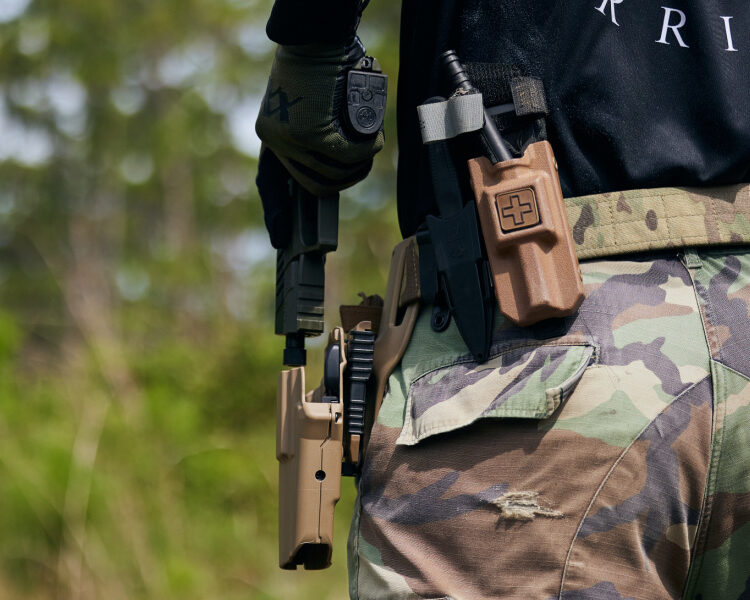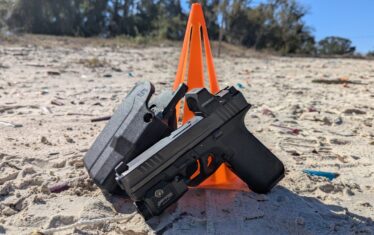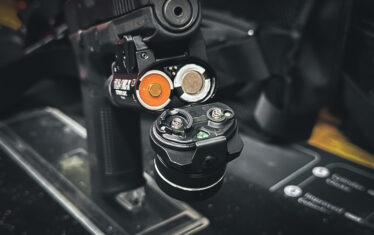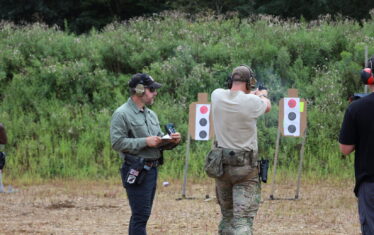When it comes to carrying a firearm, the quality and type of your holster is just as important as the firearm it carries. After all, a holster does more than just hold a handgun at your side. It acts as a critical safety device in multiple ways, which is why it is essential to make sure you have a proper holster fit for your firearm.
Poorly fitted holsters can lead to dangerous situations, which is why understanding holster fit is essential for safely carrying your gun. Here’s a look at how a holster specifically designed for your handgun enhances your safety, and how to find it.
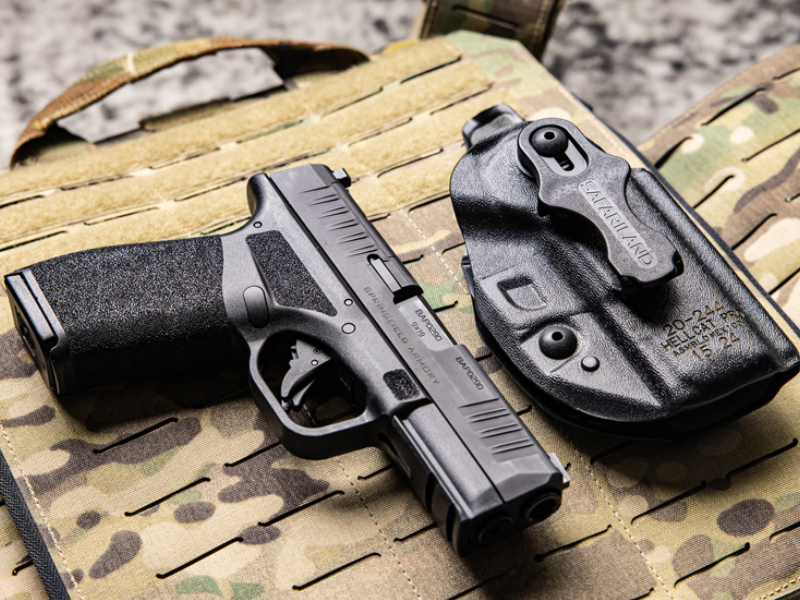
A good holster secures your gun on the move
As I mentioned above, a quality holster does more than just hold your firearm. It keeps the gun securely attached to your body as you go about your daily activities. Whether you’re sitting, walking, or even running, the holster should hold the gun firmly in place without shifting, sagging, or falling out.
One of the biggest issues with so-called ‘universal’ holsters is that they often fail at this. A holster designed to fit multiple guns often ends up being loose, allowing the gun to move around some. When a handgun is in the holster, there should be very little movement.
You want the gun to be secure with no chance of it falling out, yet easy to draw. That’s asking for two opposites at the same time, right? And yet, some holsters manage to do just that. It all comes down to the design, attachment method (how it connects to your body), and construction materials.
An Example
I’ve told this story before and it’s embarrassing, but worth telling again. Years ago, when my state first issued concealed carry permits, I got my license right away. Eager to carry a gun for protection, I purchased a revolver and grabbed the first holster I saw at the store.
It was a nylon OWB belt holster with a single belt loop on the back. I stuck my new .38 special in the holster and covered it up with my jacket. Because it was nylon, it was flimsy and dangled around, but again, I didn’t really know what I was doing at the time. I learned my lesson when it fell out of my holster onto the ground.
After some research — which I should have done before carrying a gun — I was introduced to the world of holsters. This is partially what aroused my interest in tactical gear, and then law enforcement years later.
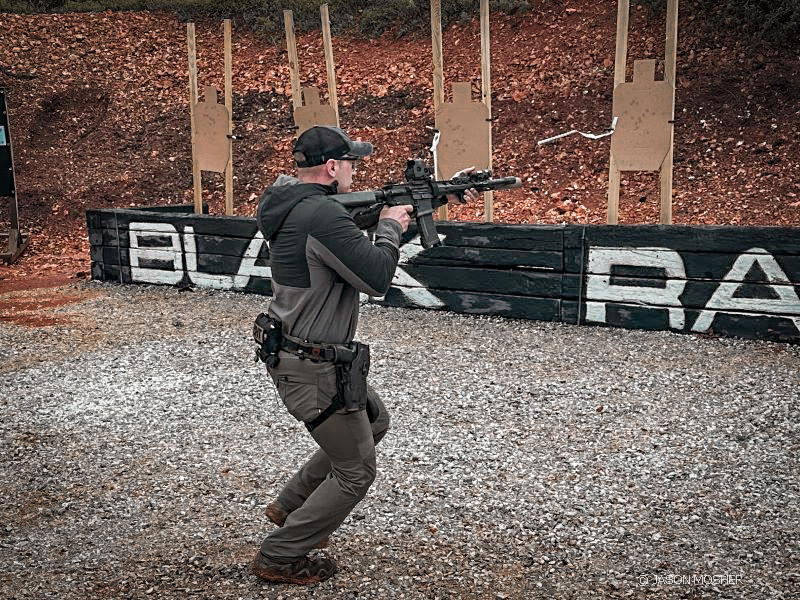
If the holster material is subpar or the attachment system (whether it’s a belt clip, paddle, or belt loop) is flimsy, you’re setting yourself up for a dangerous situation. Imagine pulling your holster off your belt unintentionally because the clip isn’t strong enough to handle the weight of your firearm. Quality holsters —crafted from durable materials and designed with precision — avoid situations like this.
Keeping your gun Safe from others
While keeping your gun holstered while moving is important, it’s equally vital to ensure it’s secure from others. This is where the distinction between passive and active retention comes into play.
Passive retention keeps the gun from falling out of the holster but doesn’t prevent someone else from drawing it. On the other hand, retention holsters have a mechanism that locks the gun in place until you intentionally draw it. This is important for law enforcement officers and just as important for anyone carrying a firearm for personal protection.
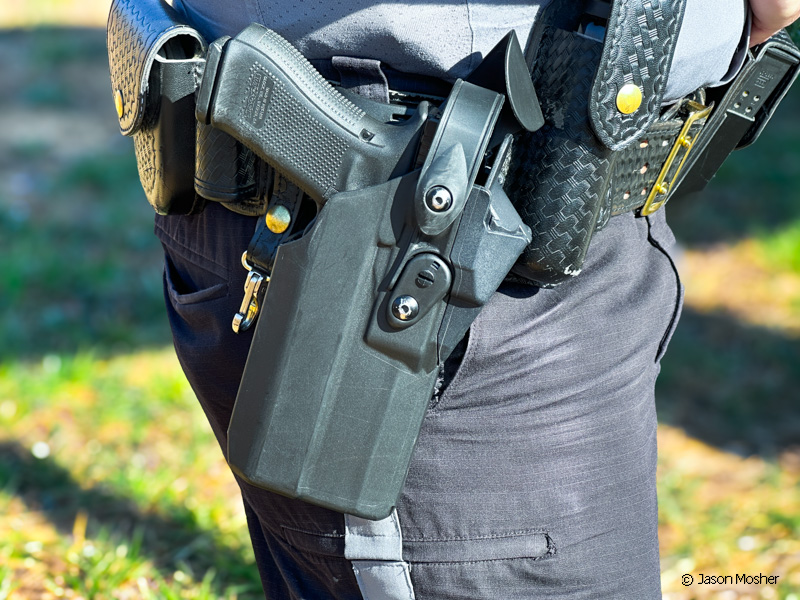
If you like to use an OWB holster, it’s a good idea to consider a duty holster with retention. But for a retention system to work correctly, it must be used on a holster made to fit that specific gun. That’s why I recommend avoiding “multi-fit” holsters with a thumb strap or some other type of retention. I’ve seen guys lose their guns even while the thumb strap was buckled. If the gun has room to move around, it’s not safe to carry.
One reason most retention systems work so well is that the gun only has enough room to pull directly upward when it’s drawn. I have some holsters that are nearly impossible to draw the gun from if you are pulling at it from an angle. In addition to the retention devices, the precise fit alone makes it hard for someone else to draw your gun.
Several years ago, one of my deputies was attacked by a drug-induced criminal who was intent on grabbing his gun. He was unable to pull it from the deputy’s Safariland holster, and once the deputy broke free from the suspect, he was able to draw his gun flawlessly. This is the perfect example of how a good holster should work. Hard for someone else to draw, but easy for the carrier.
Holster Finder: an easy way to find the perfect holster
There are plenty of holster manufacturers out there, but some stand out for their consistent quality and innovative designs. In my experience, when it comes to duty/tactical holsters, Safariland is the cream of the crop. They offer duty, tactical, and concealed carry holsters, as well as several alternative carry holsters like pocket and shoulder holsters. As I mentioned above, they’ve set the standard for duty holsters with their multiple retention levels.
When purchasing a holster, it’s essential to select the exact gun model you’re buying it for to ensure a perfect fit. That’s where the Holster Finder comes in.
Using the holster finder
Safariland’s Holster Finder option is easy to use with these simple steps.
1. Select Your Gun Manufacturer
Start by selecting the brand of your firearm (Glock, Sig, Ruger, etc.). Safariland has holster options for a wide range of manufacturers, so finding your specific make is straightforward.
2. Choose Your Model
After selecting the manufacturer, choose the model of your gun. At this stage, additional specifications like barrel length and caliber may be required. Make sure to choose the correct details so the holster fits your gun properly.
3. Add Accessories
The next key step in this process is deciding whether you’re using a light or an optic on your gun. Safariland holsters are made with precision, and the presence of a light or optic affects the fit. You’ll be asked to select the model of light and/or optic you plan to use. Make sure to choose carefully, as selecting different accessories later might affect the holster’s compatibility.
4. Review Your Holster Options
Once you’ve entered your gun model, specs, and accessory information, the Holster Finder will display a range of holsters that fit your exact setup. This personalized selection ensures you get a holster designed specifically for your firearm and its accessories.
I’ve used dozens of Safariland holsters over the years and they have always fit my gun perfectly.
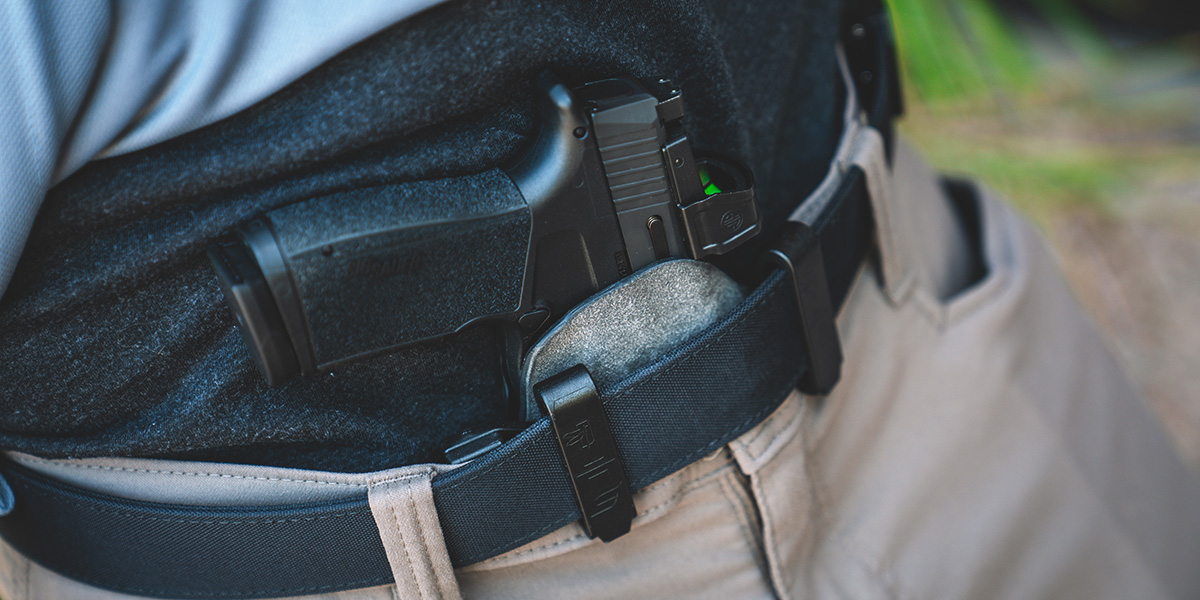
Carry smart, not cheap
Safety comes first and the holster you choose is just as important as the gun itself. I like to say, “Don’t buy an $800 gun and carry it in a $20 holster.”
Find a holster that protects your gun, stays put until you need it, and prevents others from getting ahold of it.
When choosing a holster, make it a priority to get one that is specifically made for your firearm. A poor fit could mean a lack of retention, an exposed trigger, or even the gun falling out—any of which could result in disastrous consequences.
There are a ton of options out there, just make sure the holster you select fits the gun you intend to carry.





